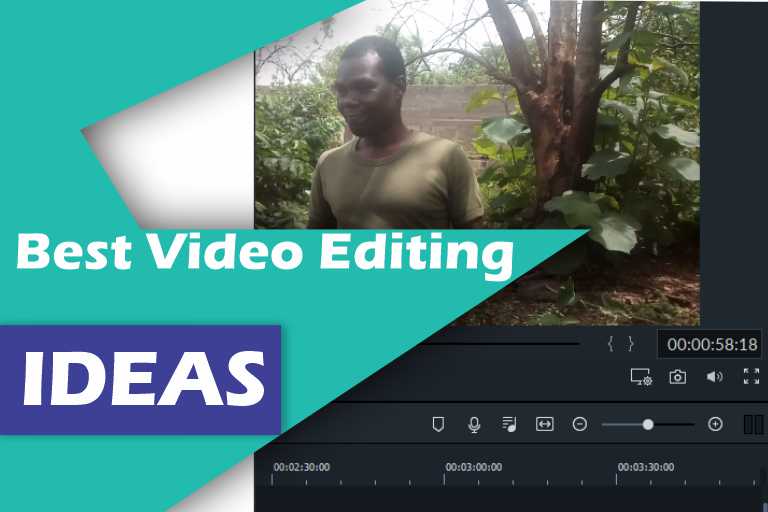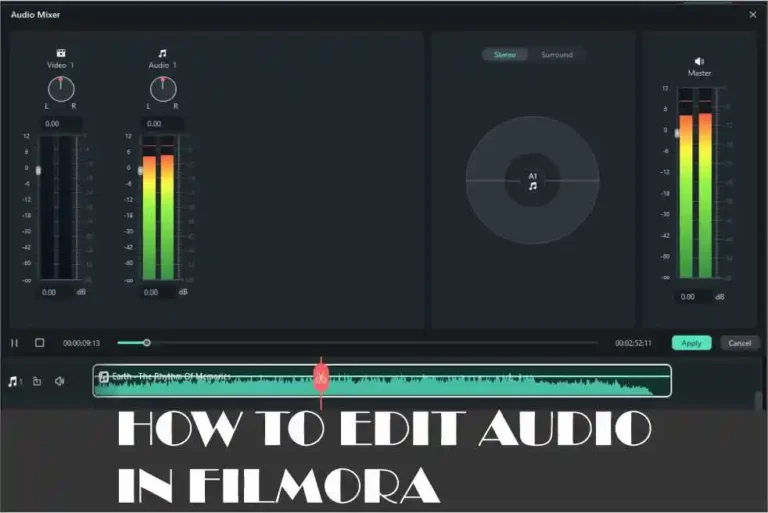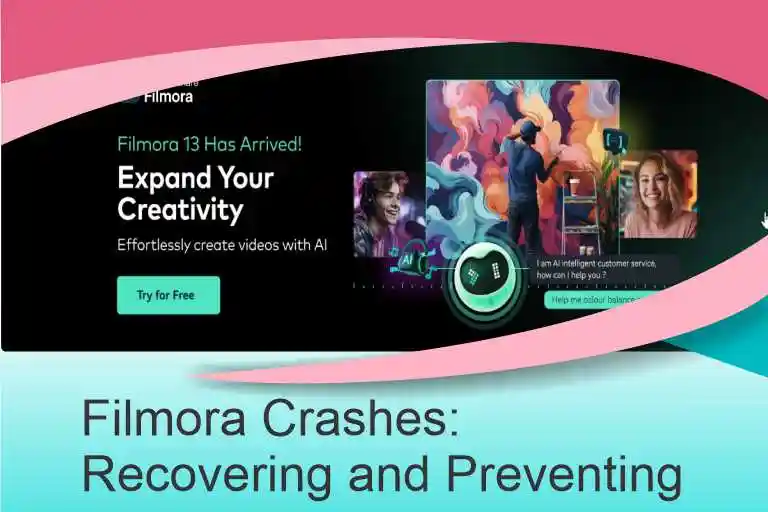13 Ways to Make a Viral Video: Complete Tutorial
Still holding onto that old iPhone? Then you are just a step away from creating a viral video. Follow my guide closely to launch your video business this year.

Anyone with a smartphone can make a viral video. Make yours now. In today’s digital age, creating videos has become more accessible than ever, thanks to the widespread availability of smartphones, affordable cameras, and user-friendly video editing software.
In this guide, I will be giving you step-by-step procedures to make a viral video. But beyond that, I will give you tips that will make your videos generate revenue.
Let’s start!
How to Make a Viral Video That Lasts Forever
Whether you’re a budding filmmaker, a content creator, or someone looking to capture and share special moments, this guide will walk you through the essential steps of making a video.
1. Choose a Video Idea that Reflects You
Before you go creating random videos, take a moment to define your purpose and concept.
Diving into the technical aspects of video making and editing is important but you should have a clear understanding of why you want to create a video and what message you want to convey.
Define your purpose and craft a concept that aligns with it. Whether it’s a tutorial, vlog, short film, music video, or promotional content, a well-thought-out concept will guide your entire video-making process.
Video making is like starting a blog. You must first of all pick a niche, have a structure for your blog, create a content outline, and so forth.
Take your time and think through the type of video you want to create, instead of rushing to publish 10 YouTube videos before realizing you are not in the right niche or that the content won’t generate enough revenue.
If you have not decided where to start, you should read this article. I’ve spent a great deal of time listing the best video editing ideas for beginners.
2. Plan How to Generate Revenue
Maybe you are not interested in generating revenue from your video. That’s okay. But if you are, then, you should plan for it.
Making money from your videos won’t happen like the TV ads where people effortlessly turn ordinary paper or handkerchiefs into money.
You must follow a working structure.
You should turn to some blog posts that teach how to make money with videos, take a course, or watch YouTube videos.
I have a few suggestions for you but before we dive into them, you should understand that the amount of revenue generated from your video will depend on different factors.
The type of video you are making, the platform you market your video, and the quality of your video (visual and message).
Understand that viral videos don’t equal big revenue.
There’s a common misconception that achieving popularity on TikTok equates to financial success, but that’s often not the case.
When I explain this to friends and family, you can observe a series of nods and “aha” moments as they grasp the concept.
To make money online, your video should have a commercial intent and the best way to achieve this is by creating a tutorial that helps people perform certain tasks.
For example, if you teach video editing, companies that develop video editing software may promote their software on your content.
If you are into comedy, you must first target a large crowd, then, you can land affiliate deals where you infuse their products into your comedy show.
You may also contact a TV station and discuss it with the management, if your content is really good, they may play your video. This can help you earn money from their sponsors.
Since this post is not about generating revenue from your video I’ll leave it here.
3. Select the Platform to Market the Video
Another important factor to consider before making a video is marketing. If this is your career path, you must spend time deciding on marketing your video.
Today, we have tens of options if not hundreds to choose from. But each comes with its own set of rules.
The internet is the obvious and cheapest option to shoot for but you must also consider which platform to choose.
The platform you choose will influence your video’s aspect ratio. This is something significant in video editing as it determines the final output.
So, you have to read about each online platform to know the video size, aspect ratio, and video length before creating an account.
Besides that, some types of videos tend to do well on some platforms than others.
Understanding the type of content you want to create will inform your audience. This will help you pick the right platform to market your videos.
In addition to the things we discussed, you need to determine the approach for promoting your content—whether through organic or paid methods.
4. Pick the Right Video Editing Software
Recently, I wrote an article on Wondershare statistics, sparking an intriguing question: when comparing Wondershare Filmora and Adobe Premiere Pro, which stands out as the better option?
Both software are powerful and better options. But depending on who is asking and the level of their work one is better than the other.
Filmora is designed with beginners in mind, making it an excellent choice for those who are just starting video editing.
On the other hand, Premiere Pro is more suited for advanced users with a deeper understanding of video editing.
If you’re a beginner, Filmora is a great option to kickstart your video editing journey.
Here is a comprehensive tutorial on Wondershare Filmora to help you better understand the software.
With that said, let’s move on.
When choosing the right video editing software, it’s crucial to consider various factors to ensure that the selected tool aligns with your specific needs and goals.
Firstly, assess the software’s user interface and ease of use, as an intuitive platform can significantly enhance your editing workflow.
Look for features such as drag-and-drop functionality, a clear timeline, and easy navigation.
New to video editing? Learn about the video timeline here to master video editing quickly.
Secondly, consider the available editing tools and effects offered by the software.
This is very important since these editing tools determine your video’s final output.
A comprehensive set of editing features, including cutting, trimming, transitions, and special effects, can contribute to the quality and creativity of your video projects.
Compatibility with various file formats and the ability to handle high-resolution footage is also essential, especially if you work with diverse media sources.
Additionally, think about the software’s performance and system requirements.
Ensure that your computer meets the specifications needed to run the software smoothly, preventing lags or crashes during the editing process.
More on that later.
Some video editing software options offer cloud-based solutions, providing flexibility in accessing and editing your projects from different devices.
5. Take Your Budget into Account
Budget is another crucial consideration. While some video editing software options are available for free, others may require a one-time purchase or subscription.
Evaluate your budget constraints and choose software that meets your editing needs and aligns with your financial resources.
Furthermore, look into customer support and community resources. Opt for video editing software with reliable customer support, tutorials, and an active user community.
This can be beneficial in troubleshooting issues, learning new features, and staying updated on the latest trends and techniques in video editing.
6. Choose the Right Computer for the Job
Selecting the appropriate computer for a specific task is a critical decision that can significantly impact performance and efficiency.
When choosing the right computer for the job, several factors should be considered to ensure it meets your needs and supports the demands of your work.
Choosing the right computer involves an analysis of its purpose, processing power, memory, storage, graphics, portability, connectivity, operating system, budget, and user reviews.
Consider these factors to make an informed decision that aligns with your specific needs.
7. Plan Your Shots
Now that you’ve taken care of the basic needs, you can get to business.
Once you have your concept, plan the shots you need to tell your story effectively.
Consider the locations, angles, and sequences that will best convey your message.
A shot list or storyboard can be immensely helpful in organizing your ideas and ensuring you capture all the necessary footage during filming.
8. Gather Your Equipment
You don’t need a Hollywood budget to make a viral video.
Most smartphones come equipped with high-quality cameras, but even better if you have access to a dedicated camera.
Ensure your equipment is fully charged, and consider investing in a tripod for stability.
Additional accessories like microphones or lighting kits can enhance the overall quality of your video.
9. Record Your Footage
When shooting, pay attention to composition, lighting, and audio.
Use a tripod to keep your shots steady, ensure good lighting to avoid shadows, and use an external microphone for clearer audio.
Take multiple shots from different angles and distances to give yourself plenty of options during the editing phase.
10. Edit Your Video
Editing is where your raw footage comes to life. Use video editing software to trim unnecessary footage, arrange clips in a logical sequence, and add transitions, music, and effects.
There are various user-friendly editing tools available, ranging from free options like Shotcut and DaVinci Resolve to more advanced software like Adobe Premiere Pro and Final Cut Pro.
11. Add a Soundtrack
Music can significantly enhance the mood and impact of your video.
Choose a soundtrack that complements your content and sets the right tone. Be mindful of copyright laws; you can use royalty-free music from platforms like YouTube Audio Library, and Epidemic Sound, or consider creating your music.
12. Finalize and Export
Once you’re satisfied with your edited video, it’s time to export the final product.
Choose the appropriate settings for your platform – whether it’s YouTube, Instagram, or another platform – to ensure the best quality and compatibility.
Save a copy of your project file in case you need to make future edits.
13. Share Your Video
You’ve successfully created a video.
Now it’s time to share it with the world.
Upload your video to your preferred platform, write an engaging description, and share it across your social media channels to reach a wider audience.
Conclusion
Making a video can be a rewarding and creative process. By following these steps, you’ll be well on your way to producing compelling and professional-looking videos that capture your audience’s attention.
Remember to continuously learn and experiment with new techniques to improve your skills and create even more captivating content.







I must say that I really enjoyed reading your blog articles, even though there was an aesthetically pleasing piece of the stuff I recently came across. However, I’ll be subscribing to your updates, and I do hope to receive them promptly each time.
Thanks for always coming back for more.
Nice blog here Also your site loads up fast What host are you using Can I get your affiliate link to your host I wish my web site loaded up as quickly as yours lol